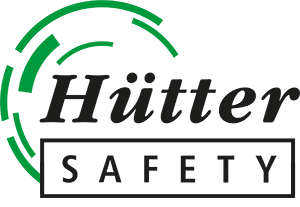Training & Support
Hütter Safety provides training to all their customers in order to develop their competence in design, advice, installation, inspection and certification of equipment for working at heights. The training modules are all with a practical approach that is meant to provide students with the necessary experience.
Training content:
- Description of the Scope fall arrest product line and its competitive advantages
- Design and positioning of fall protection systems and equipment
- American and European standards and responsibility
- Calculation for installation
- Fastening techniques
- Practical installation training
- Inspection and maintenance
- Certifications process
- Technical support
These training modules are provided at our training centre in Hoofddorp-NL by our experienced fall protection specialists or worldwide at the premises of our customers.
The training program content is defined in consultation with participants, on the basis of their experience and knowledge of fall protection systems. This helps to achieve a high level of training effectiveness for your staff. Both existing and new customers can participate in these trainings which are of benefit to those who are responsible for designing, calculating and/or inspecting fall protection systems.
Hütter Safety can also provide technical and commercial information in a seminar format to develop awareness in diverse audiences with respect to the use of this equipment.
Our technical support is available to answer any technical or product related questions you might have, and to give advice. Please do not hesitate to contact us!
EN STANDARD AND FALL ARREST
Personal protective equipment against falls
- Anchor devices
- Requirements and testing
EN 795 standard is a European standard , which has been harmonized in the Netherlands and introduced in the Health and Safety Act.
EN 795 is divided into six areas:
EN 795 A single anchor points for flat and pitched roofs (10 kN)
EN 795 A2 single anchor points for flat and pitched roofs (10 kN)
EN 795 B temporary anchoring (12 kN)
EN 795 C permanent line systems
EN 795 D horizontal railsystems
EN 795 E deadweight anchor
The Classes A , B, D, are not covered by the PPE directive 89/686.
The EN 795 is a type approval. Type approval means that tests carried out by a Notified Body (certified inspection body ) have shown that the product complies with the standard. The standard for example, indicates that the installed product must withstand a fall from 2.5 meters to a person of 100 kg and a static load of 1000 kg over a period of 3 minutes
The approval covers the product ( type approval ) and not their installation. Hence, the confirmation must be carried out in a competent manner and with the appropriate fasteners.
The assembly procedure and compounds of the structure are not covered by the PPE directive. It is up to the supplier or installer to demonstrate that the strength of the attachment on the construction of the building complies. This can, for example, by means of a tensile test, as described in the EN 795 (load of 500 kg for 15 sec). Thus, testing the anchoring to the building construction / roof.
The EN 795A standard covers only the various anchor devices at the time of sale.
Components of line systems in the C class are covered by the PPE Directive and other supplementary guidelines.
Hütter Safety keeps a Technical Dossier Assembly in which all information to be documented with respect to the placement of the fall protection products or systems. For example the actual situation before the assembly, the materials used, fasteners, water resistance, and the tensile tests carried out.
Upon delivery, the customer receives a delivery document and a certificate, which contains information about the materials used and an assurance that the delivered goods complies/meet the relevant standards. It is important then to ensure that the delivered and installed products are annually inspected by a certified person.



